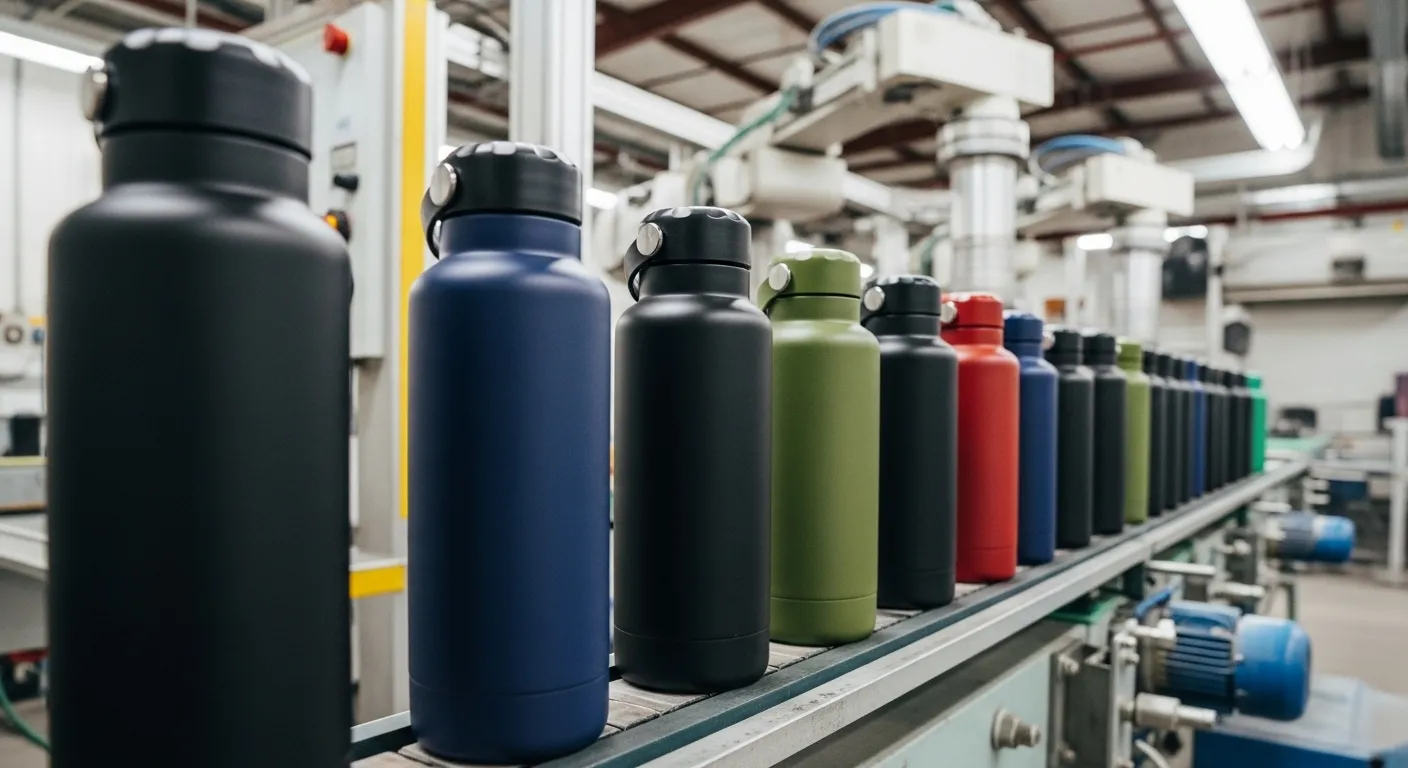
Struggling to pick the right coating for your stainless steel bottles? The wrong choice could cost you durability, safety, and profit.
Powder coating is the most widely used paint for stainless steel water bottles in industrial production, offering durability, high material efficiency, and compliance with food safety standards when properly cured.
Get clarity on coatings—discover how the right finish boosts branding, safety, and scale. This guide helps OEM buyers and brand owners make informed, cost-effective decisions.
Why Apply Finishes to Stainless Steel in Water Bottle Manufacturing?
Stainless steel is tough, but plain surfaces don't win customers. Coatings elevate product appeal, grip, and protection.
Applying finishes to stainless steel bottles improves scratch resistance, grip, and branding—helping brands stand out and protect bottle longevity.
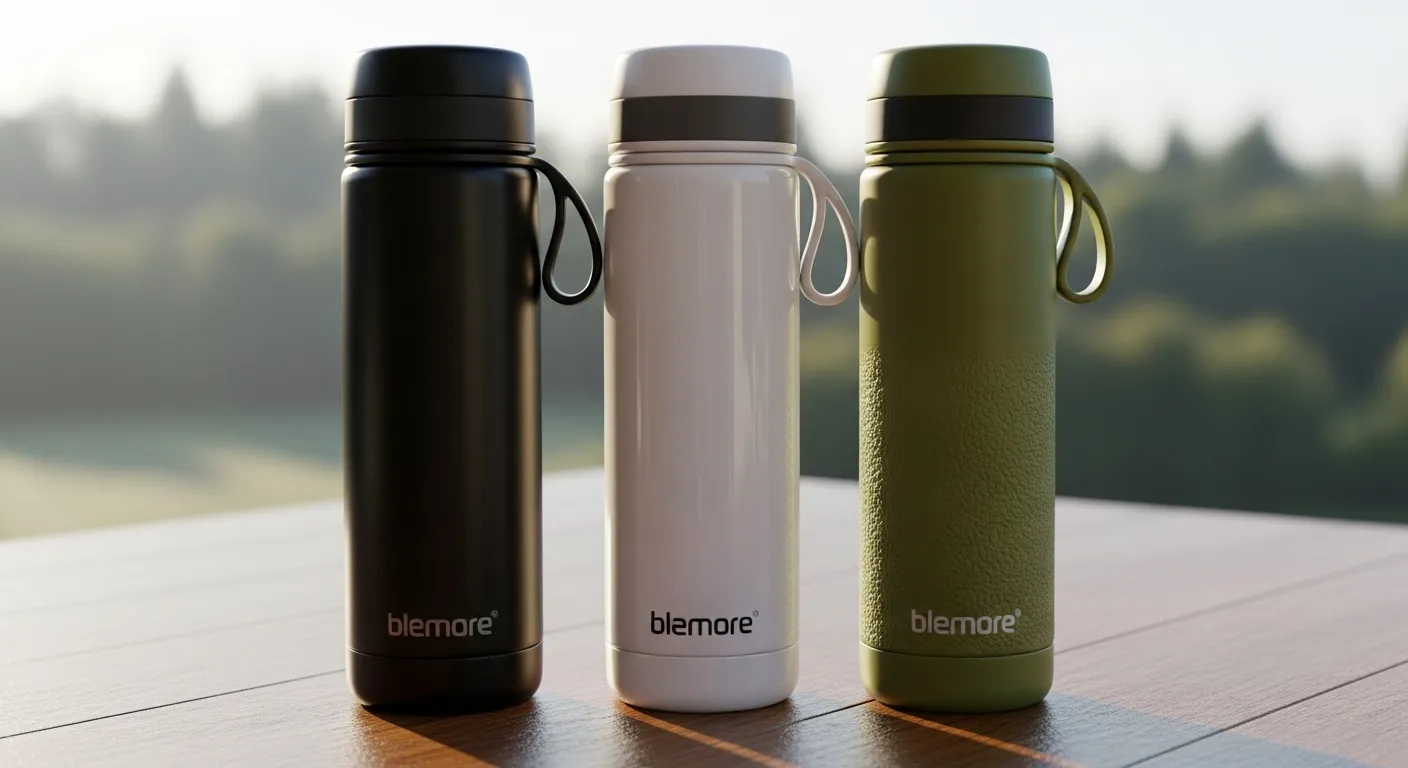
Branding and Differentiation
- Matte, gloss, and textured finishes create visual and tactile uniqueness.
- Branded coatings help build shelf appeal and retail value.
Durability and Grip
- Finishes can reduce visible wear by up to 60%.
- Textured coatings reduce drop risk by 20%, critical for sports and outdoor users.
Market Trends
- Over 80% of top-selling insulated bottles use custom coatings.
- Color variations can boost customer selection and perceived value by 30%.
How Do You Prepare Stainless Steel Surfaces for Optimal Coating Adhesion in Production?
Even the best paint fails without proper surface prep. Poor adhesion leads to chipping, rust, and unhappy customers.
Industrial prep methods like degreasing and abrasive blasting are critical for paint adhesion, reducing coating failures by up to 80%.
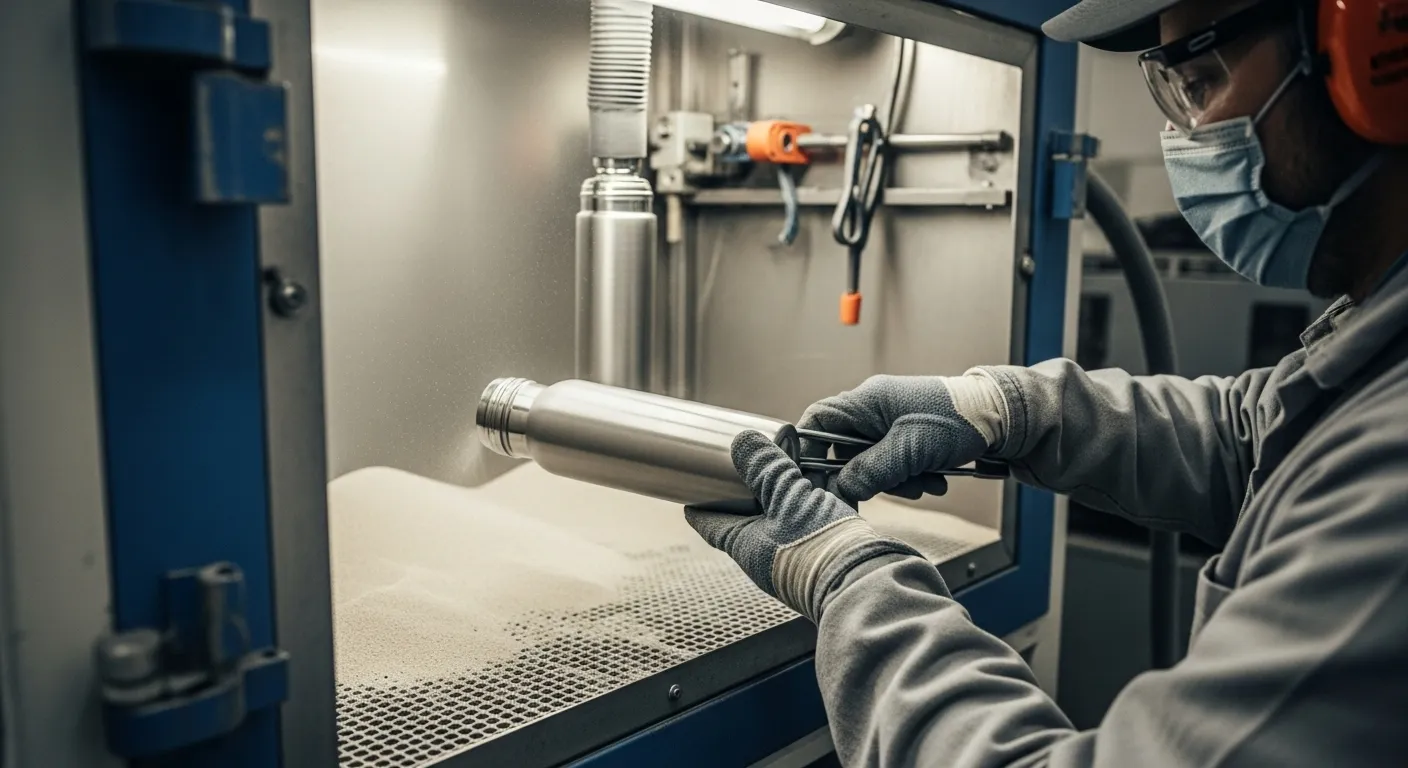
Surface Preparation Steps
-
Degreasing
- Use chloride-free cleaners (e.g., Rust-Oleum Pre-Paint) to remove oils.
-
Abrasive Blasting (SSPC-SP-10)1
- Creates a rough surface profile of 2–3 mils for strong mechanical bond.
- Shot blasting triples coating adhesion compared to sanding.
-
Light Abrasion (for small runs)
- Use red Scotch-Brite pads manually where blasting isn't possible.
Common Failures from Poor Prep
- Delamination in humid conditions (common in Southeast Asia).
- Blistering due to surface contaminants.
Time & Cost Impact
| Step | Time/Unit | Benefit |
|---|---|---|
| Degreasing | 1 min | Removes oils, prevents blistering |
| Shot Blasting | 5 mins | Boosts adhesion 3x |
| Manual Abrasion | 3 mins | Best for small-batch customization |
What's the Top Coating Choice: Powder Coating vs. PVD for Mass Production?
Choosing the wrong coating affects throughput and profit. PVD may look sleek but costs more and slows down production.
Powder coating is ideal for large-scale production due to lower costs, higher throughput, and excellent durability, while PVD suits premium, smaller runs.
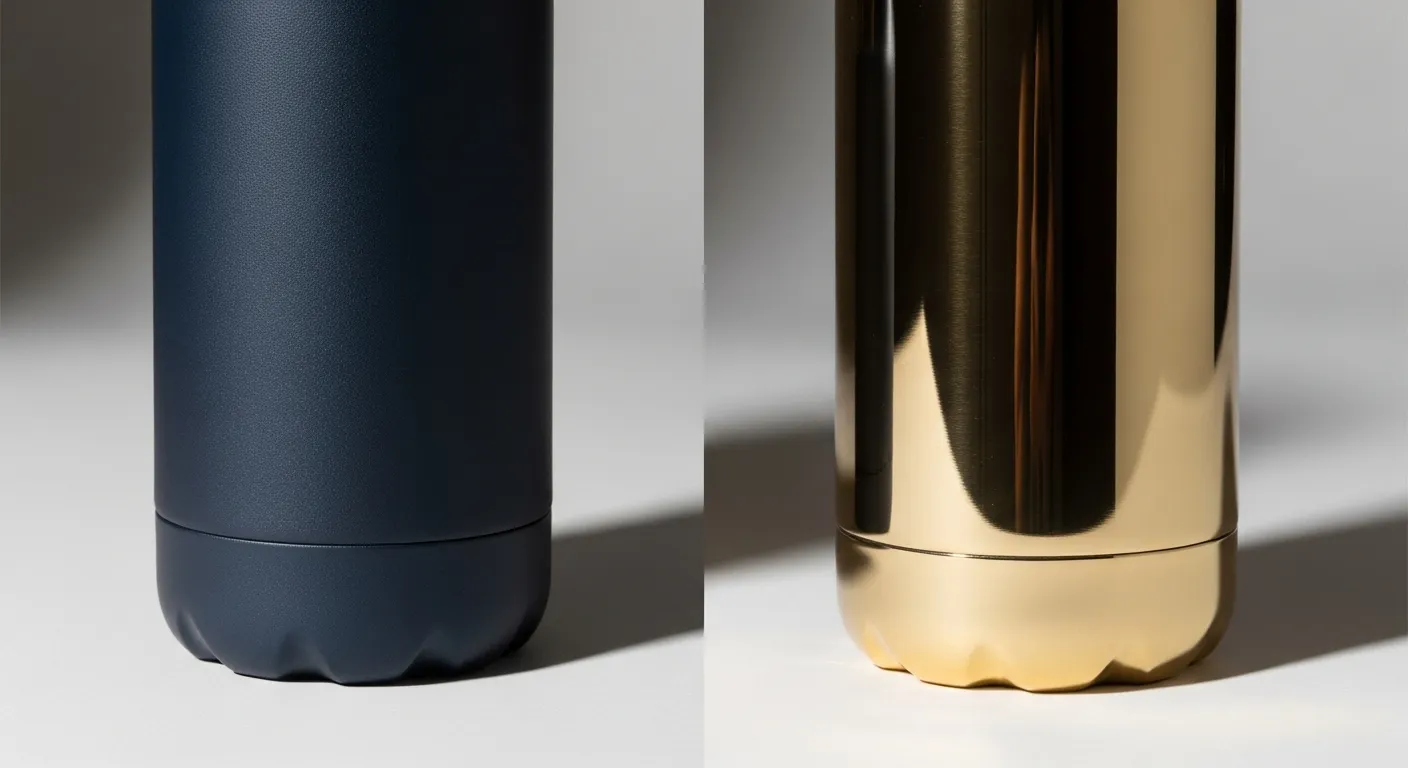
Coating Comparison Table
| Coating | Durability (Cycles) | Cost/Unit | Throughput (Units/Hr) | Best For |
|---|---|---|---|---|
| Powder | 500+ dishwasher runs | $0.20–0.50 | 500+ | Mass OEM |
| PVD | 1,000+ scratch tests | $1–3 | 100–200 | Luxury bottles |
Advantages of Powder Coating
- 95% material utilization (less waste).
- Cures at 400°F in 20 minutes.
- Adds grip and thickness for outdoor use.
When to Choose PVD
- When branding luxury or designer lines.
- If scratch resistance or metallic sheen is a must.
- For antimicrobial or premium niche markets2.
Which Coatings Meet Strict Food-Safety Standards for Bottles?
Food safety compliance isn't optional—it's the law. Many coatings aren't safe for direct contact.
Only certain coatings, like STEEL-IT epoxy, meet FDA and USDA standards for incidental food contact3 on bottle exteriors.
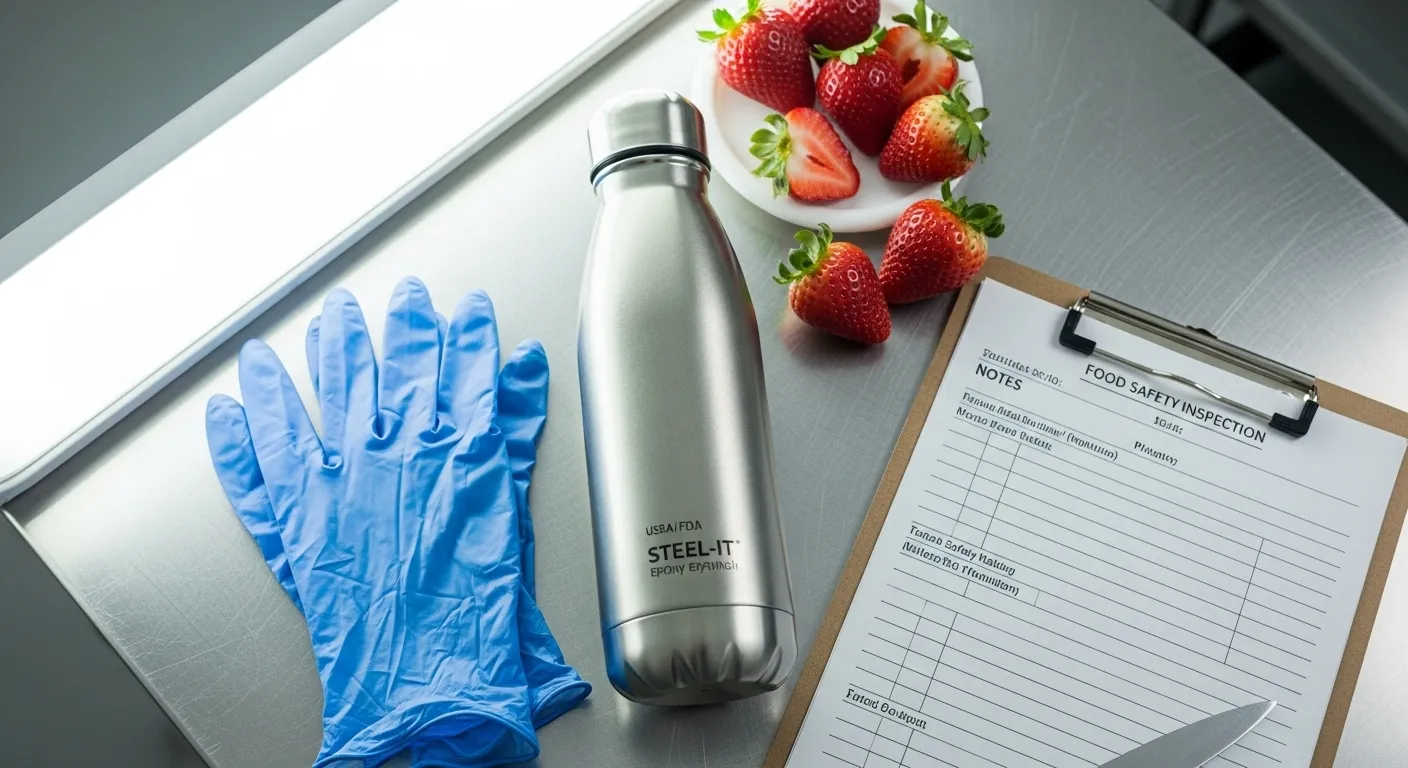
Food-Safe Coatings and Regulations
- STEEL-IT Epoxy: USDA/FDA compliant (21 CFR 175.300)
- Supercoat 316L: USDA-compliant exterior use
- PVD: Physically inert, safe for indirect contact
"Always test coatings against FDA migration limits, especially when used near mouths or hands."
Avoid
- Powder coating for interior use: May leach PFAS/plastics.
- DIY enamel: Not certified, high failure in hot-fill lines.
How Can You Apply and Cure Coatings Efficiently on the Manufacturing Line?
Slow curing or inconsistent lines hurt delivery timelines. High-speed, automated coating lines are the solution.
Electrostatic powder coating with conveyor ovens4 is the fastest and most efficient method for coating stainless steel bottles at scale.
Efficient Coating Methods
- Powder Coating: Electrostatic spray + conveyor oven = 500/hr throughput
- Spray Painting: Artistic, but 30–50% overspray waste
- PVD: Vacuum chamber batch, slower (100/hr), but high-quality
Key Production Tips
- Automate blasting for consistency
- Use IR ovens for hybrid lines (cuts cure time by 30%)
- Maintain humidity <60% to prevent curing defects
What Are the Cost and ROI Implications of Different Bottle Finishes?
Coating adds cost, but it also adds value. The right choice boosts margins.
Powder coating costs $0.20–$0.50 per bottle and can deliver up to 40% margin improvements through enhanced branding and reduced returns.
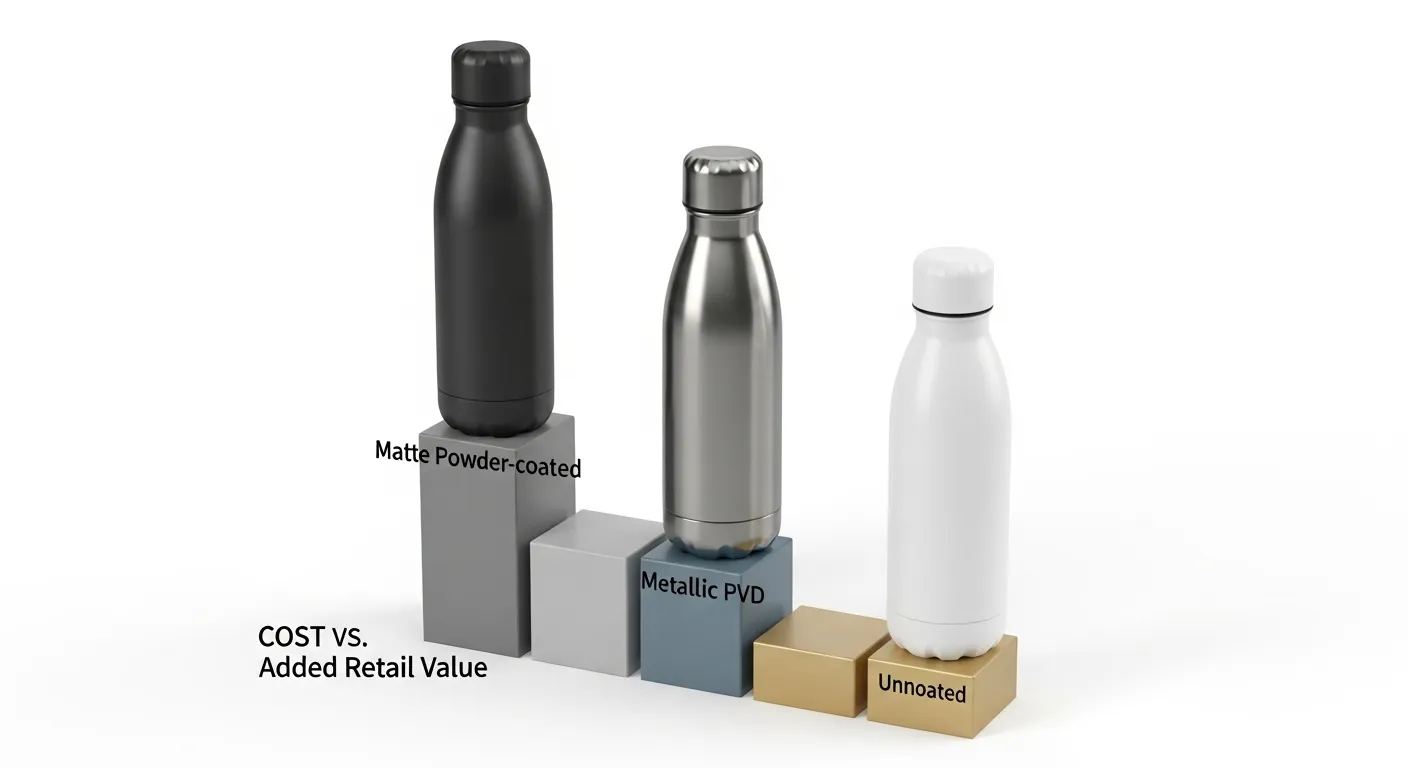
ROI Breakdown
| Coating | Cost/Unit | Added Retail Value | ROI Period |
|---|---|---|---|
| Powder | $0.20–0.50 | $2–$5 | 6 months |
| PVD | $1–3 | $5–$10+ | 12+ months |
Additional Factors
- Returns: Powder reduces scratches, cutting returns by 25%
- Brand Uplift: Matte or custom hues increase brand recognition
- Production Loss: Poor prep adds 10% to rework costs
How Do You Troubleshoot Common Coating Failures in SS Bottle Production?
Chipping and peeling damage your brand image. The fix starts with prevention.
Common failures like chipping or delamination can be prevented by proper surface prep, humidity control, and cross-hatch testing (ASTM D3359)5.
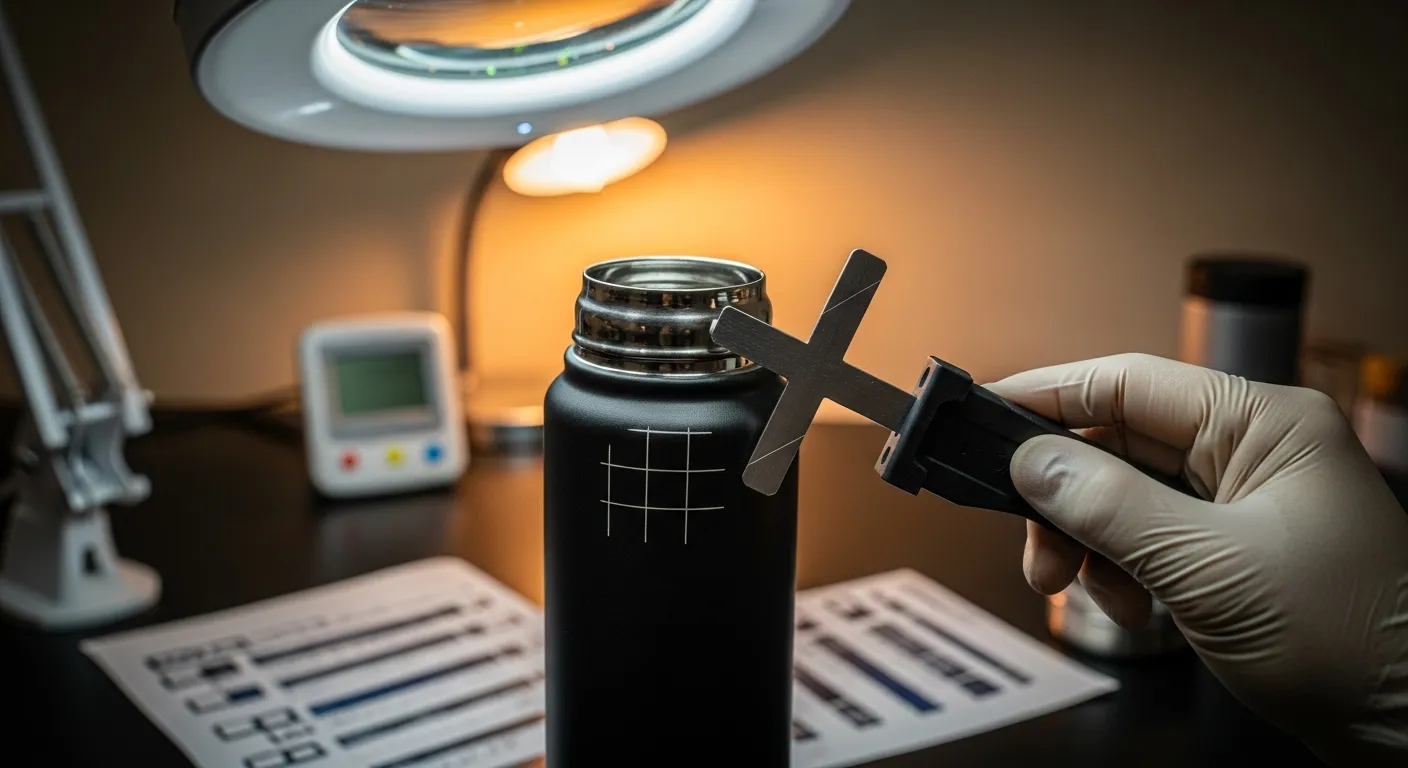
Common Issues & Solutions
- Chipping: Improve blasting depth; topcoat with polyurethane
- Delamination: Monitor humidity levels (<60% RH)
- Color Fading: Use UV-stable topcoats
Testing Method
- Cross Hatch Adhesion Test (ASTM D3359): Look for 4B or better rating
- Pull-Off Test (ASTM D4541): Ensure >300 psi adhesion for durability
Conclusion
Powder coating is the best option for mass manufacturing stainless steel bottles—efficient, safe, and built for scale.
FAQs
Is powder coating dishwasher safe for stainless steel bottles?
Yes, if properly cured. It can withstand over 500 dishwasher cycles without peeling.
Can I powder coat the inside of a stainless steel bottle?
No. Most powders are not food-safe for interior contact. Use uncoated or electropolished interiors.
What's the most eco-friendly coating for stainless bottles?
Uncolored stainless steel is 100% recyclable. Powder coatings are better than liquid paints due to lower VOCs6.
Does PVD add weight to the bottle?
No. PVD adds only 1–5 microns of thickness—too thin to change weight.
Can I use acrylic spray paints for production runs?
Not recommended. Acrylics lack industrial adhesion and may fail after washing or hot-fill.
Footnotes:
-
Discover industry standards for Near-White Metal Blast Cleaning (SSPC-SP-10) that removes 95% of surface contaminants and dramatically improves coating adhesion through proper abrasive blasting techniques. ↩
-
Explore how Physical Vapor Deposition can incorporate silver-doped coatings with antibacterial properties ideal for medical-grade and luxury bottle applications where antimicrobial protection is essential. ↩
-
Learn about Title 21 CFR regulations that govern food contact materials and understand what makes coatings legally compliant for bottle exteriors, including FDA and USDA approval processes. ↩
-
Learn how electrostatic powder coating application achieves 80-90% transfer efficiency with near-zero waste compared to traditional liquid spray methods, maximizing production throughput and material utilization. ↩
-
Understand the industry-standard ASTM D3359 tape test method that evaluates coating adhesion on a 0-5 scale to prevent delamination and coating failure before products reach consumers. ↩
-
Discover why powder coatings contain zero volatile organic compounds (VOCs), making them environmentally friendly, compliant with air quality regulations, and safer for workers compared to solvent-based paints. ↩

